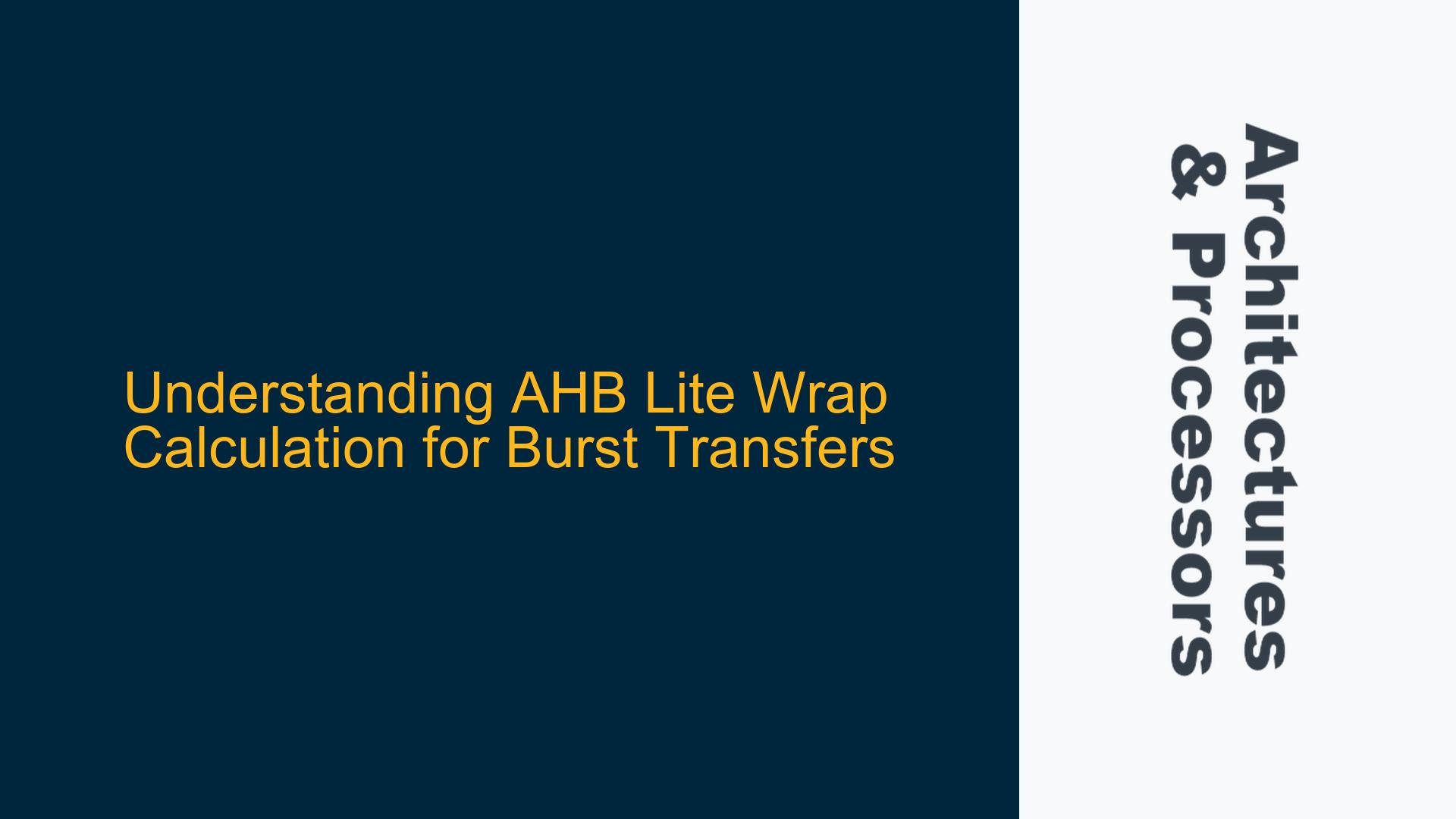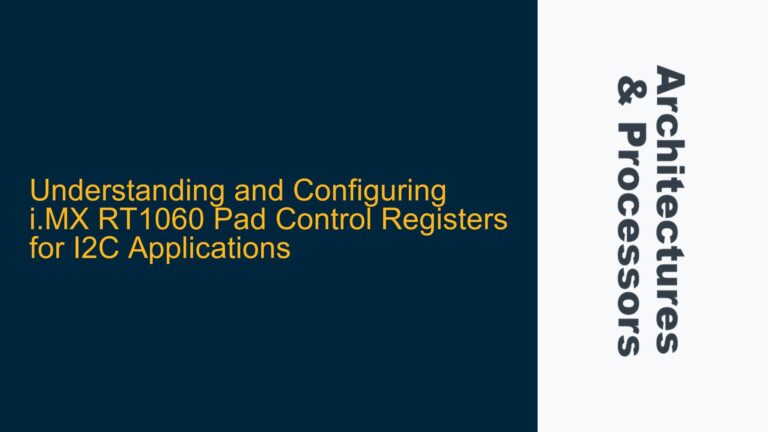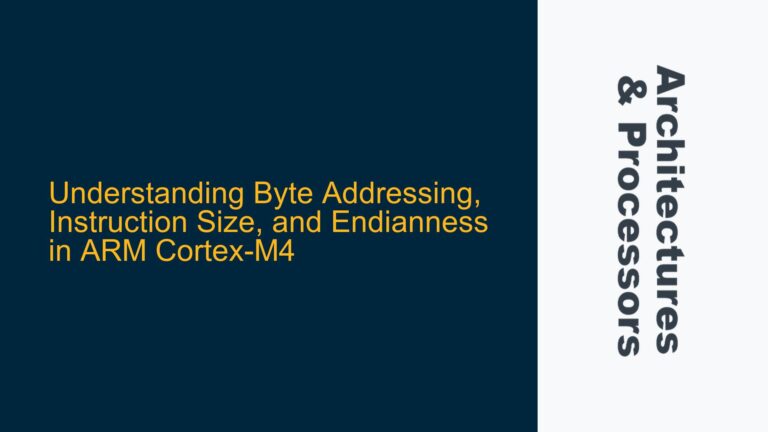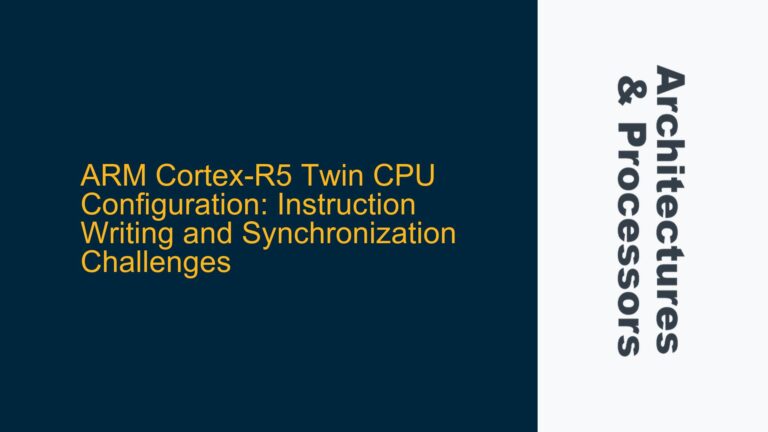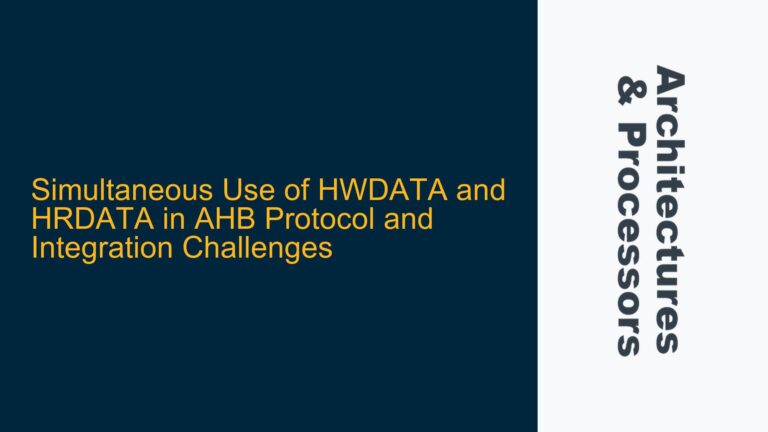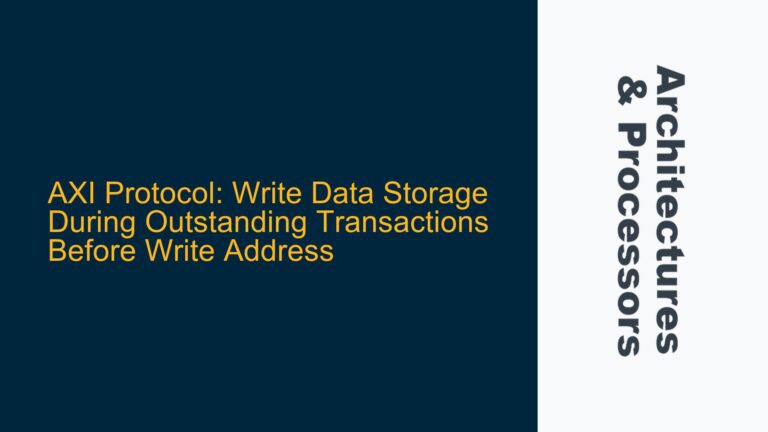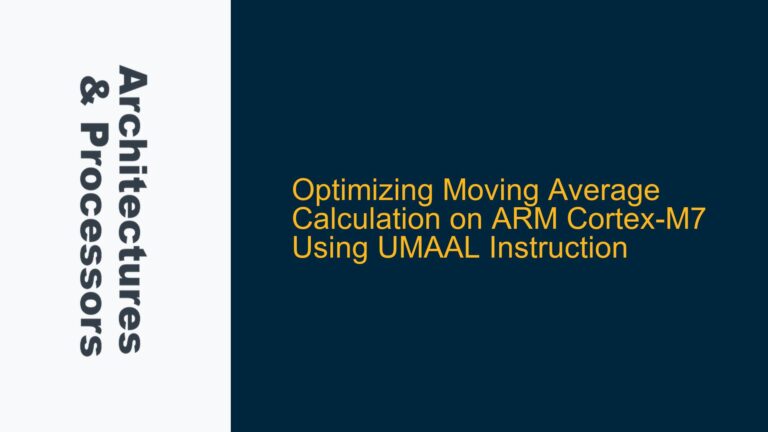AHB Lite Wrap Burst Calculation and Alignment Issues
The AHB Lite protocol, a subset of the Advanced Microcontroller Bus Architecture (AMBA), is widely used in ARM-based SoC designs for its simplicity and efficiency in handling data transfers. One of the key features of AHB Lite is its support for burst transfers, which allow multiple data transactions to occur in a single bus operation. Among the burst types, wrapping bursts are particularly important for cache line fills and other scenarios where data locality is critical. However, calculating the wrap boundary and understanding the alignment requirements for wrapping bursts can be challenging, especially when dealing with different transfer sizes (HSIZE) and burst lengths (HBURST).
In wrapping bursts, the address sequence wraps around a boundary that is determined by the transfer size and the burst length. For example, a 4-beat wrapping burst with a transfer size of 1 byte (HSIZE = 0) will wrap around a 4-byte boundary. Similarly, a 4-beat wrapping burst with a transfer size of 2 bytes (HSIZE = 1) will wrap around an 8-byte boundary. The wrap boundary is calculated based on the start address, the transfer size, and the burst length. If the start address is already aligned to the wrap boundary, the burst will proceed without wrapping. However, if the start address is not aligned, the address sequence will wrap around the boundary after reaching the end of the burst length.
The confusion often arises when determining whether a start address is aligned to the wrap boundary and how to calculate the wrap boundary and the address at which the burst will wrap. This is further complicated by the fact that the AHB Lite specification provides formulas for calculating the wrap boundary and the wrap address, but these formulas can be difficult to interpret without a clear understanding of the underlying principles.
Misalignment and Incorrect Wrap Boundary Calculation
One of the primary causes of confusion in AHB Lite wrap burst calculation is the misalignment of the start address with respect to the wrap boundary. The wrap boundary is determined by the product of the transfer size (HSIZE) and the burst length (HBURST). For example, if the transfer size is 1 byte (HSIZE = 0) and the burst length is 4 beats (HBURST = 2), the wrap boundary is 4 bytes. Similarly, if the transfer size is 2 bytes (HSIZE = 1) and the burst length is 4 beats (HBURST = 2), the wrap boundary is 8 bytes.
If the start address is aligned to the wrap boundary, the burst will proceed without wrapping. For example, if the start address is 0x04 and the wrap boundary is 4 bytes, the burst will access addresses 0x04, 0x05, 0x06, and 0x07. However, if the start address is not aligned to the wrap boundary, the address sequence will wrap around the boundary after reaching the end of the burst length. For example, if the start address is 0x3A and the wrap boundary is 8 bytes, the burst will access addresses 0x3A, 0x3C, 0x3E, and then wrap back to 0x38.
Another common issue is the incorrect application of the formulas provided in the AHB Lite specification for calculating the wrap boundary and the wrap address. The formula for the wrap boundary is:
[ \text{Wrap_Boundary} = \left(\text{INT}\left(\frac{\text{Start_Address}}{\text{Number_Bytes} \times \text{Burst_Length}}\right)\right) \times (\text{Number_Bytes} \times \text{Burst_Length}) ]
The formula for the wrap address is:
[ \text{Address_N} = \text{Wrap_Boundary} + (\text{Number_Bytes} \times \text{Burst_Length}) ]
These formulas can be difficult to interpret, especially when dealing with start addresses that are already aligned to the wrap boundary. In such cases, the wrap address will never be reached, and the burst will proceed without wrapping. However, if the start address is not aligned, the wrap address will be reached, and the address sequence will wrap around the boundary.
Correcting Wrap Calculation and Ensuring Proper Alignment
To correctly calculate the wrap boundary and ensure proper alignment in AHB Lite wrap bursts, it is essential to understand the relationship between the start address, the transfer size, and the burst length. The wrap boundary is determined by the product of the transfer size and the burst length, and the start address must be aligned to this boundary for the burst to proceed without wrapping.
For example, consider a 4-beat wrapping burst with a transfer size of 1 byte (HSIZE = 0) and a start address of 0x04. The wrap boundary is 4 bytes, and since the start address is already aligned to this boundary, the burst will access addresses 0x04, 0x05, 0x06, and 0x07 without wrapping. Similarly, consider a 4-beat wrapping burst with a transfer size of 2 bytes (HSIZE = 1) and a start address of 0x38. The wrap boundary is 8 bytes, and since the start address is already aligned to this boundary, the burst will access addresses 0x38, 0x3A, 0x3C, and 0x3E without wrapping.
If the start address is not aligned to the wrap boundary, the address sequence will wrap around the boundary after reaching the end of the burst length. For example, consider a 4-beat wrapping burst with a transfer size of 2 bytes (HSIZE = 1) and a start address of 0x3A. The wrap boundary is 8 bytes, and since the start address is not aligned to this boundary, the burst will access addresses 0x3A, 0x3C, 0x3E, and then wrap back to 0x38.
To ensure proper alignment and correct wrap calculation, it is essential to follow these steps:
- Determine the Wrap Boundary: Calculate the wrap boundary using the formula:
[ \text{Wrap_Boundary} = \left(\text{INT}\left(\frac{\text{Start_Address}}{\text{Number_Bytes} \times \text{Burst_Length}}\right)\right) \times (\text{Number_Bytes} \times \text{Burst_Length}) ]
-
Check Alignment: Verify whether the start address is aligned to the wrap boundary. If the start address is aligned, the burst will proceed without wrapping. If the start address is not aligned, the address sequence will wrap around the boundary after reaching the end of the burst length.
-
Calculate the Wrap Address: If the start address is not aligned, calculate the wrap address using the formula:
[ \text{Address_N} = \text{Wrap_Boundary} + (\text{Number_Bytes} \times \text{Burst_Length}) ]
- Generate the Address Sequence: Generate the address sequence for the burst, taking into account the wrap boundary and the wrap address. If the start address is aligned, the address sequence will be a simple increment. If the start address is not aligned, the address sequence will wrap around the boundary after reaching the end of the burst length.
By following these steps, you can ensure proper alignment and correct wrap calculation in AHB Lite wrap bursts, avoiding common pitfalls and ensuring efficient data transfers in your ARM-based SoC designs.
Practical Examples and Verification Strategies
To further illustrate the concepts of wrap boundary calculation and alignment in AHB Lite wrap bursts, let’s consider a few practical examples and discuss verification strategies to ensure correct implementation.
Example 1: 4-Beat Wrapping Burst with 1-Byte Transfer Size
Consider a 4-beat wrapping burst with a transfer size of 1 byte (HSIZE = 0) and a start address of 0x04. The wrap boundary is calculated as follows:
[ \text{Wrap_Boundary} = \left(\text{INT}\left(\frac{0x04}{1 \times 4}\right)\right) \times (1 \times 4) = 0x04 ]
Since the start address is already aligned to the wrap boundary, the burst will proceed without wrapping, accessing addresses 0x04, 0x05, 0x06, and 0x07.
Example 2: 4-Beat Wrapping Burst with 2-Byte Transfer Size
Consider a 4-beat wrapping burst with a transfer size of 2 bytes (HSIZE = 1) and a start address of 0x38. The wrap boundary is calculated as follows:
[ \text{Wrap_Boundary} = \left(\text{INT}\left(\frac{0x38}{2 \times 4}\right)\right) \times (2 \times 4) = 0x38 ]
Since the start address is already aligned to the wrap boundary, the burst will proceed without wrapping, accessing addresses 0x38, 0x3A, 0x3C, and 0x3E.
Example 3: 4-Beat Wrapping Burst with 2-Byte Transfer Size and Misaligned Start Address
Consider a 4-beat wrapping burst with a transfer size of 2 bytes (HSIZE = 1) and a start address of 0x3A. The wrap boundary is calculated as follows:
[ \text{Wrap_Boundary} = \left(\text{INT}\left(\frac{0x3A}{2 \times 4}\right)\right) \times (2 \times 4) = 0x38 ]
Since the start address is not aligned to the wrap boundary, the burst will access addresses 0x3A, 0x3C, 0x3E, and then wrap back to 0x38.
Verification Strategies
To verify the correct implementation of AHB Lite wrap bursts, the following strategies can be employed:
-
Simulation with Corner Cases: Simulate the AHB Lite interface with various start addresses, transfer sizes, and burst lengths, including corner cases where the start address is misaligned to the wrap boundary. Verify that the address sequence wraps correctly around the boundary.
-
Formal Verification: Use formal verification techniques to prove that the address sequence generated by the AHB Lite interface adheres to the wrap boundary and alignment rules specified in the AHB Lite protocol.
-
Assertion-Based Verification: Implement assertions in the simulation environment to check that the address sequence does not exceed the wrap boundary and that the wrap address is correctly calculated and applied.
-
Code Reviews and Static Analysis: Perform code reviews and static analysis of the RTL implementation to ensure that the wrap boundary and wrap address calculations are correctly implemented and that there are no logical errors.
By employing these verification strategies, you can ensure that the AHB Lite wrap burst implementation in your ARM-based SoC design is correct and robust, avoiding potential issues in data transfers and improving overall system performance.
In conclusion, understanding and correctly implementing AHB Lite wrap burst calculation and alignment is crucial for efficient data transfers in ARM-based SoC designs. By following the steps outlined in this post and employing the verification strategies discussed, you can ensure that your AHB Lite interface operates correctly and efficiently, avoiding common pitfalls and ensuring reliable system performance.
